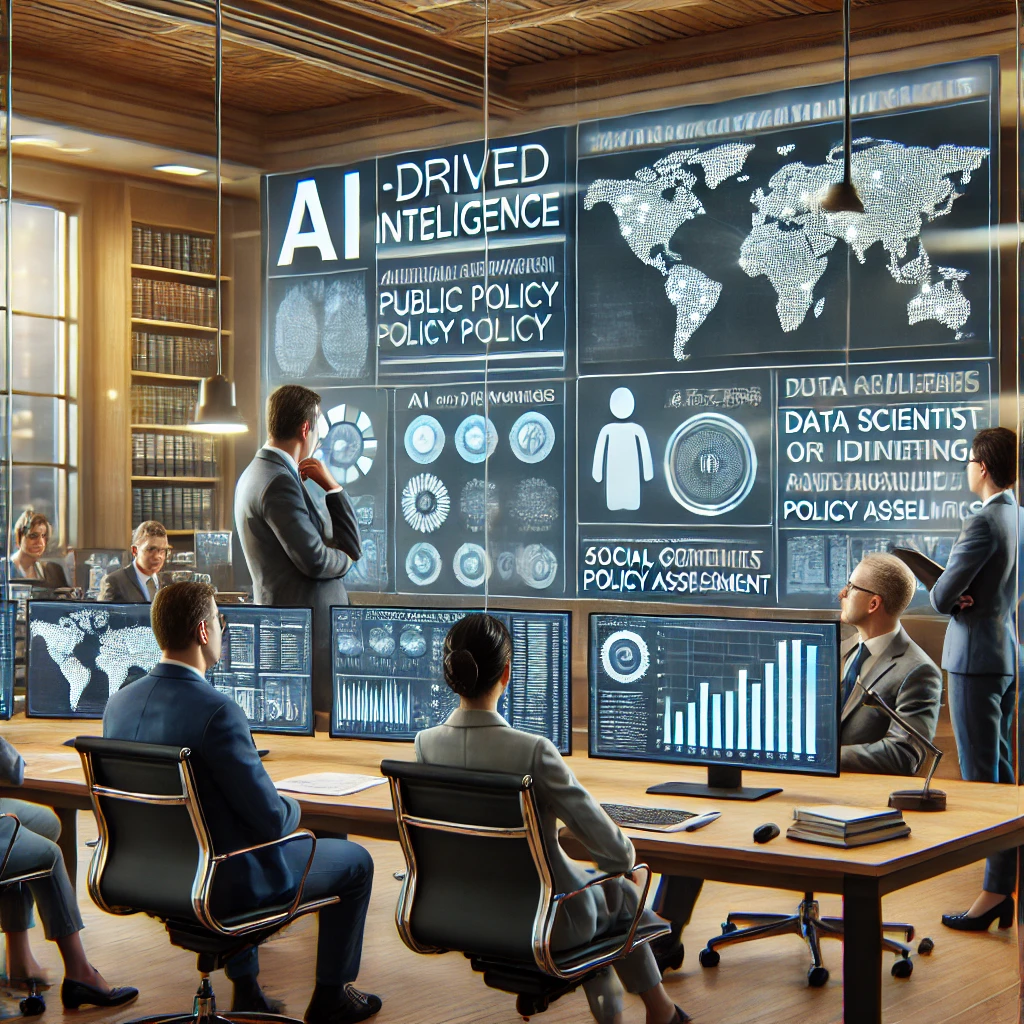Artificial intelligence and public trust: Can AI improve governance?
Guided by the three-element theory of attitude in social psychology, the model assesses public attraction to specific policies, their stance, and emerging concerns during policy implementation. Convolutional neural networks (CNNs) enable deep learning from large-scale text data, automatically detecting sentiment shifts and trends in real time. Notably, the AI model achieves an accuracy rate of 93.40%, surpassing the effectiveness of many existing evaluation models.

Governments worldwide are under increasing pressure to evaluate public policies efficiently while responding to the dynamic and evolving needs of their citizens. However, traditional policy evaluation methods struggle to keep pace with the rapidly changing socio-political landscape. These methods often rely on surveys, expert analyses, and historical performance metrics, which can be slow, costly, and prone to subjective biases.
A groundbreaking study titled "Can Artificial Intelligence Technology Help Achieving Good Governance: A Public Policy Evaluation Method Based on Artificial Neural Network" by Zhinan Xu, Zijun Liu, and Hang Luo, published in Sage Open 2025 15:1, explores how artificial intelligence (AI) can redefine policy evaluation through a data-driven, real-time approach. By utilizing artificial neural networks (ANNs) and big data analytics, the study presents a method that enhances the accuracy, efficiency, and responsiveness of public policy assessments.
Challenges of traditional policy evaluation
Policy evaluation plays a crucial role in governance, as it informs decision-makers on the effectiveness and impact of implemented policies. However, traditional evaluation frameworks face significant limitations. Many government agencies rely on retrospective analysis—examining policy performance only after its full implementation. This often leads to delays in recognizing inefficiencies and hinders timely adjustments.
One of the most glaring issues with conventional evaluation techniques is the lack of real-time feedback loops. Surveys and expert assessments, while useful, are labor-intensive and susceptible to biases. Additionally, they may fail to capture the full spectrum of public opinion, especially in an era where digital platforms serve as key arenas for political discourse. Furthermore, different population segments may experience policies differently, making it difficult to gain a comprehensive understanding of policy impact through a single, standardized method.
AI and neural networks in public policy assessment
The study proposes a paradigm shift in policy evaluation by integrating artificial neural networks (ANNs) with big data analytics. This approach leverages online public opinion data - including social media discussions, news reports, and online petitions - to gauge public sentiment toward policies dynamically.
Guided by the three-element theory of attitude in social psychology, the model assesses public attraction to specific policies, their stance, and emerging concerns during policy implementation. Convolutional neural networks (CNNs) enable deep learning from large-scale text data, automatically detecting sentiment shifts and trends in real time. Notably, the AI model achieves an accuracy rate of 93.40%, surpassing the effectiveness of many existing evaluation models.
Unlike traditional surveys, which often provide a static snapshot of public opinion, AI-powered analysis continuously updates its assessment based on new data. This dynamic capability allows policymakers to proactively identify areas of discontent, anticipate public reactions, and refine policies before major dissatisfaction arises.
Moreover, the AI model identifies correlations between various policy factors and public responses, helping decision-makers understand the nuances of citizen concerns. For instance, it can detect patterns indicating whether public dissatisfaction stems from policy content, implementation inefficiencies, or external socio-political influences. This level of granularity is invaluable for crafting targeted interventions that address specific policy weaknesses.
Implications for good governance
The application of AI in policy evaluation holds transformative potential for governance. First and foremost, it facilitates evidence-based decision-making, shifting policymaking from a reactive to a proactive approach. By continuously monitoring public sentiment and policy effectiveness, governments can fine-tune their strategies in real time, minimizing negative impacts before they escalate.
AI-driven policy evaluation also enhances public trust and engagement. Transparency in governance improves when citizens see their feedback being incorporated into policy revisions. By making policy assessments more interactive and responsive, governments can foster a culture of participatory governance, where citizen voices are not only heard but actively influence decision-making.
Additionally, AI reduces administrative burdens. Automated data collection and analysis free up valuable resources, allowing policymakers and analysts to focus on high-level strategy rather than being bogged down by labor-intensive evaluation processes. However, despite these benefits, integrating AI into policy evaluation comes with challenges.
One key concern is algorithmic bias. AI models learn from existing data, which may reflect societal biases. If not properly addressed, these biases could result in skewed evaluations, disproportionately favoring or disadvantaging certain groups. Governments must ensure that AI systems are trained on diverse datasets and employ fairness-enhancing techniques to mitigate bias.
Data privacy is another critical issue. AI-driven evaluation relies on vast amounts of digital information, much of which originates from personal online interactions. Governments must establish strict ethical guidelines to ensure that data is used responsibly and that citizens' privacy is safeguarded.
Furthermore, AI-based evaluations should complement, not replace, human judgment. While AI can process data at unprecedented scales, it lacks the contextual understanding and ethical reasoning that human policymakers bring to the table. Ensuring that AI remains a tool for augmentation rather than automation is crucial in maintaining ethical governance practices.
- FIRST PUBLISHED IN:
- Devdiscourse










